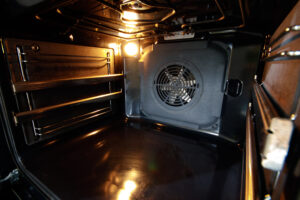 It is one thing to recognize the need for streamlined thermal management capabilities, but it is something completely different to pursue appropriate methods that can help you achieve your goals in an optimal manner. Indeed, our team works with you from the very beginning to not only identify your unique needs, but offer solutions that are specifically designed to elevate your outcomes. In today’s blog, the team at Noren Thermal Solutions in Taylor, TX takes a look at the differences between passive and active cooling capabilities and discusses factors you should know with respect to your applications.
It is one thing to recognize the need for streamlined thermal management capabilities, but it is something completely different to pursue appropriate methods that can help you achieve your goals in an optimal manner. Indeed, our team works with you from the very beginning to not only identify your unique needs, but offer solutions that are specifically designed to elevate your outcomes. In today’s blog, the team at Noren Thermal Solutions in Taylor, TX takes a look at the differences between passive and active cooling capabilities and discusses factors you should know with respect to your applications.
Both Are Eco-Friendly Thermal Solutions
It goes without saying that overheating is the number one threat to application function across industries. It does not matter how advanced your devices are and what their intended purpose is, they are all subject to overheating and the complications that arise as a result of it. Though most applications are not designed with a thermal solution in mind, that does not mean you cannot pursue solutions after the fact.
Indeed, the methods behind your heat exchanger solutions are the key to optimal function and capabilities, and our team is more than happy to help you find the solution ideal for your needs. To do so, however, you should have an understanding of the options available.
The team at Noren specializes in eco-friendly thermal solutions, as we believe you can achieve optimal application function through eco-friendly methods without having to sacrifice quality. Some methods include thermoelectric cooling, phase-change technology, and passive or active cooling. To learn more about this process and what our team can do to help, give us a call today.
Understanding Natural Convection
Now that we understand the environmentally-friendly side of passive and active cooling, let’s take a look at the methods behind the process. Both passive and active cooling utilizes the thermal management concept of convection, which refers to the transfer of heat from a solid to a fluid or other medium.
Taking a closer look at passive methods, we see that the primary convective heat transfer that is occurring is natural convection. This process occurs when variations in temperature create density variations and, subsequently, buoyancy forces that cause fluid motion. Contact our team to learn more today.
Forced Convection and Active Means
On the other hand, active cooling utilizes forced convection to provide cooling throughout an application. This often occurs when the working fluid is forced to flow over the surface of a heat exchanger by an external force such as a pump or fan. This process creates an artificially-induced convection current.
Give Our Team a Call
To learn more about the different eco-friendly technologies our team utilizes to help you get the most from your devices, contact Noren Thermal Solutions in Taylor, TX by calling 512-595-5700 and speak to a representative from our team today.



